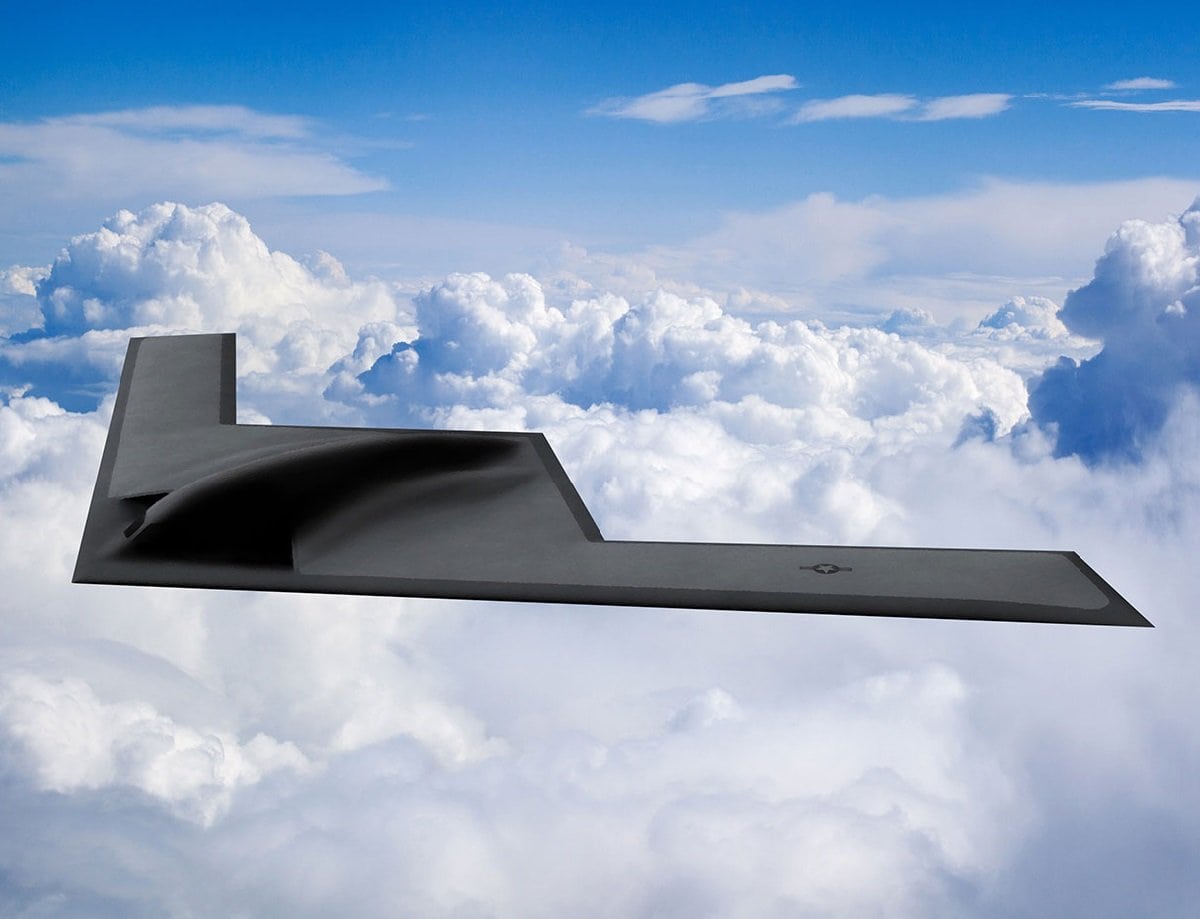1945 has previously reported that the first flight of the U.S. Air Force’s new stealth bomber will not take place until 2023, and the Air Force has now confirmed this.
The B-21 program will need more time to deal with unspecified issues, and the bomber will have to wait another six months to take its maiden flight, according to an unnamed Air Force public affairs officer cited in Air Force Magazine on May 20.
More Testing Needed
Air Force Rapid Capabilities Office Director Randall Walden pointed out that the first airplane was “largely assembled and undergoing outdoor calibration tests.” These, he said, would be followed by taxi tests and first flight, but he did not give a timetable.
If the airplane emerges from the Northrop Grumman plant for testing, the public should get a glimpse of the B-21 later this year.
The stealth bomber program has not been problematic thus far. The Air Force has been transparent throughout the acquisition process, and U.S. Senator Tom Cotton has called the program “exquisitely run.”
The B-21 “remains within its acquisition program baseline for cost, schedule, and performance established at Milestone B award, which was based on an independent government estimate for the program,” the spokeswoman said.
Did Engineers Spot an Issue?
Other airplane acquisition programs, such as Boeing’s T-7A Red Hawk trainer, have been delayed by supply chain and labor availability problems. But Walden ruled out supply chain issues for the B-21. It may be that designers and engineers found something during ground testing, and Northrop Grumman wants to make absolutely sure that there are no manufacturing problems.
The Air Force says it will not cut corners in development just to meet the deadlines desired by the Pentagon, White House, Congress, or the media. The B-21 will only fly when it is completely ready.
“The B-21 program continues to ensure the first flight test aircraft is a high-quality build and production-representative, to drive an efficient flight test campaign,” the spokeswoman said. “The first flight will be data- and event-driven, not a date-driven event.”
The Air Force plans to spend $32 billion on the B-21 program from FY23 to FY27. The B-21 could go on patrol missions by the mid-2020s, allowing some B-1 and B-2 bombers to begin retiring as serial production of the new stealth bombers continues.
No Need to Worry Yet
The B-21 is designed to penetrate enemy air defenses, drop precision-guided bombs, and launch stand-off land-attack cruise missiles. It could even launch hypersonic weapons, and it is nuclear-capable, too.
This delay should not cause too much concern. 1945 already projected that the B-21 would first fly next year. Now if the delays stretch until 2024, that would be a problem for Air Force brass – one that might require testimony to the U.S. Senate or House Armed Services Committees.
The main concern with any acquisition plan is safety – both for the airplane, and for its test pilots. The B-21 has some wiggle room for minor schedule slips. The B-52, B-1, and B-2 bombers can pick up the slack until the B-21 is entirely ready.
Now serving as 1945’s Defense and National Security Editor, Brent M. Eastwood, PhD, is the author of Humans, Machines, and Data: Future Trends in Warfare. He is an Emerging Threats expert and former U.S. Army Infantry officer. You can follow him on Twitter @BMEastwood.

